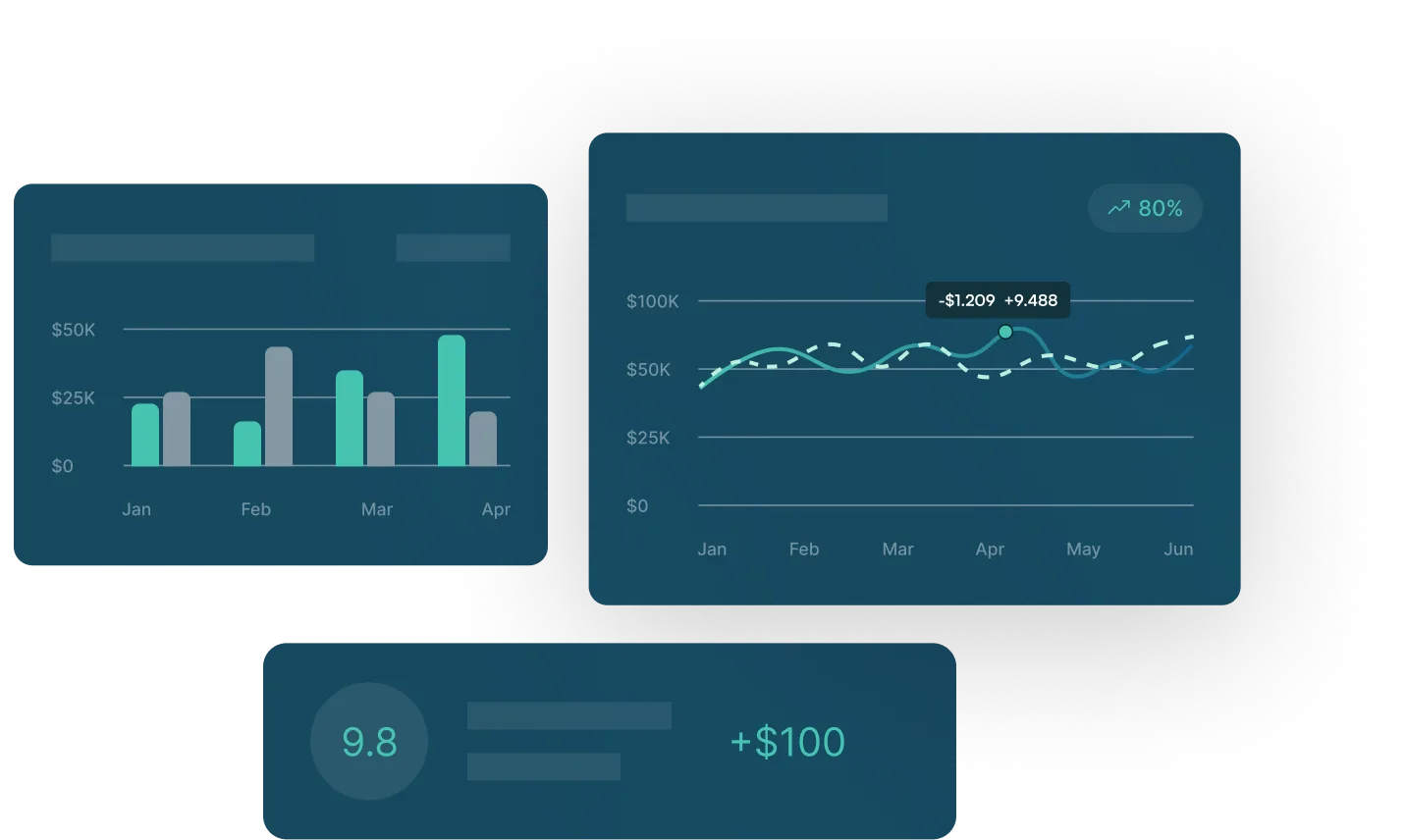Understanding Balance Sheet Exposures
.jpeg)
.jpeg)
A majority of corporations identify and hedge balance sheet exposures. In fact, they are the most commonly hedged exposures by far. In order to do so, one must understand why balance sheet exposures pose a risk in the first place and how to identify which types of balances qualify as “balance sheet” exposures.
Balance Sheet Exposure Definition
A balance sheet exposure is what’s called a “transaction exposure” under U.S. GAAP. They are expected to result in an exchange of one currency type for another and produce un-welcomed foreign currency gains and losses on company financials.
Only balances that are denominated in a currency other than the entity’s functional currency are considered exposures. For example, a U.S. company might collect euro accounts receivable based on a foreign sale and then convert those euros to USD cash. This type of transaction results in a currency gain/loss based on the accounting rate vs. the conversion rate given by the bank. Since the U.S. entity is USD functional, the euro accounts receivable is considered a balance sheet exposure.
Monetary vs. Non-Monetary
Each general ledger account (or transactions within an account) on the balance sheet can be broken down between monetary and non-monetary balances. All monetary balances are expected to result in an eventual conversion of cash, while non-monetary balances will not.
Under U.S. GAAP, monetary balances become transaction exposures and are required to reflect changes in value based on changes in currency rates in the FX gain/loss line. On the other hand, non-monetary balance values are frozen in functional currency and therefore currency changes have no impact on them through the income statement. This is why non-monetary balances are excluded by corporate hedgers.
Common Exposures: What Qualifies and What Doesn’t
The FASB only lists which accounts qualify as non-monetary items under ASC 830. Although the list is very old (FAS 52: 1981), it does give guidance to the types of balances that should NOT be considered monetary and therefore do not become balance sheet exposures.
Common non-monetary accounts include: Marketable Securities, Pre-Paids, Inventory, Goodwill, Property Plant & Equipment and Deferred Revenue. In each case, the cash or monetary portion of the transaction has either already moved or belongs to a balance in another account.
Special update: Under new lease accounting guidance, the FASB clearly lays out the requirement to revalue a lease liability (for lessors) and to classify the right-of-use asset as non-monetary. Under 842-20-55-10: “The right-of-use asset is a non-monetary asset, while the lease liability is a monetary liability”. Therefore, any foreign currency denominated lease liabilities should be remeasured through income.
For example, inventory is non-monetary because the monetary account associated with it is accounts payable. Accounts payable is the balance sheet exposure in this case.
The most common monetary items that are considered balance sheet exposures include: Cash, Accounts Payable/Receivable, Accruals, Debt, Taxes Payable/Receivable (Including VAT) Inter-company Payable/Receivable and Lease Liabilities.
Other Considerations
As with all things, difficulty can be in the details. When identifying balance sheet exposures, it is important to understand your legal entity structure. It is critical to know the functional currency of each entity.
For example, if a French subsidiary is USD functional, then euro accounts receivable is a balance sheet exposure — but if the French subsidiary is euro functional, it is not a balance sheet exposure.
Also, be mindful of balance sheet accounts as they can contain a mix of monetary and non-monetary balances. For example, a foreign deposit might be considered a pre-paid (non-monetary) or a refundable deposit (monetary).
Knowing which is which and how the accounting works makes all the difference in identifying these exposures. Understanding balance sheet exposures is not terribly difficult once you have a solid grasp of the accounting rule-set applied.
We recommend reviewing annually the monetary/non-monetary set-up in your ERP system as a foreign currency risk control.
Understanding Balance Sheet Exposures
A majority of corporations identify and hedge balance sheet exposures. In fact, they are the most commonly hedged exposures by far. In order to do so, one must understand why balance sheet exposures pose a risk in the first place and how to identify which types of balances qualify as “balance sheet” exposures.
Balance Sheet Exposure Definition
A balance sheet exposure is what’s called a “transaction exposure” under U.S. GAAP. They are expected to result in an exchange of one currency type for another and produce un-welcomed foreign currency gains and losses on company financials.
Only balances that are denominated in a currency other than the entity’s functional currency are considered exposures. For example, a U.S. company might collect euro accounts receivable based on a foreign sale and then convert those euros to USD cash. This type of transaction results in a currency gain/loss based on the accounting rate vs. the conversion rate given by the bank. Since the U.S. entity is USD functional, the euro accounts receivable is considered a balance sheet exposure.
Monetary vs. Non-Monetary
Each general ledger account (or transactions within an account) on the balance sheet can be broken down between monetary and non-monetary balances. All monetary balances are expected to result in an eventual conversion of cash, while non-monetary balances will not.
Under U.S. GAAP, monetary balances become transaction exposures and are required to reflect changes in value based on changes in currency rates in the FX gain/loss line. On the other hand, non-monetary balance values are frozen in functional currency and therefore currency changes have no impact on them through the income statement. This is why non-monetary balances are excluded by corporate hedgers.
Common Exposures: What Qualifies and What Doesn’t
The FASB only lists which accounts qualify as non-monetary items under ASC 830. Although the list is very old (FAS 52: 1981), it does give guidance to the types of balances that should NOT be considered monetary and therefore do not become balance sheet exposures.
Common non-monetary accounts include: Marketable Securities, Pre-Paids, Inventory, Goodwill, Property Plant & Equipment and Deferred Revenue. In each case, the cash or monetary portion of the transaction has either already moved or belongs to a balance in another account.
Special update: Under new lease accounting guidance, the FASB clearly lays out the requirement to revalue a lease liability (for lessors) and to classify the right-of-use asset as non-monetary. Under 842-20-55-10: “The right-of-use asset is a non-monetary asset, while the lease liability is a monetary liability”. Therefore, any foreign currency denominated lease liabilities should be remeasured through income.
For example, inventory is non-monetary because the monetary account associated with it is accounts payable. Accounts payable is the balance sheet exposure in this case.
The most common monetary items that are considered balance sheet exposures include: Cash, Accounts Payable/Receivable, Accruals, Debt, Taxes Payable/Receivable (Including VAT) Inter-company Payable/Receivable and Lease Liabilities.
Other Considerations
As with all things, difficulty can be in the details. When identifying balance sheet exposures, it is important to understand your legal entity structure. It is critical to know the functional currency of each entity.
For example, if a French subsidiary is USD functional, then euro accounts receivable is a balance sheet exposure — but if the French subsidiary is euro functional, it is not a balance sheet exposure.
Also, be mindful of balance sheet accounts as they can contain a mix of monetary and non-monetary balances. For example, a foreign deposit might be considered a pre-paid (non-monetary) or a refundable deposit (monetary).
Knowing which is which and how the accounting works makes all the difference in identifying these exposures. Understanding balance sheet exposures is not terribly difficult once you have a solid grasp of the accounting rule-set applied.
We recommend reviewing annually the monetary/non-monetary set-up in your ERP system as a foreign currency risk control.
.jpeg)
See GTreasury in Action
Get connected with supportive experts, comprehensive solutions, and untapped possibility today.






























.png)





.png)
.png)







.png)












.jpeg)

.jpeg)


.jpeg)







.jpeg)

.jpeg)





.jpeg)


.jpeg)

.jpeg)











.jpg)





.jpg)

.jpg)





